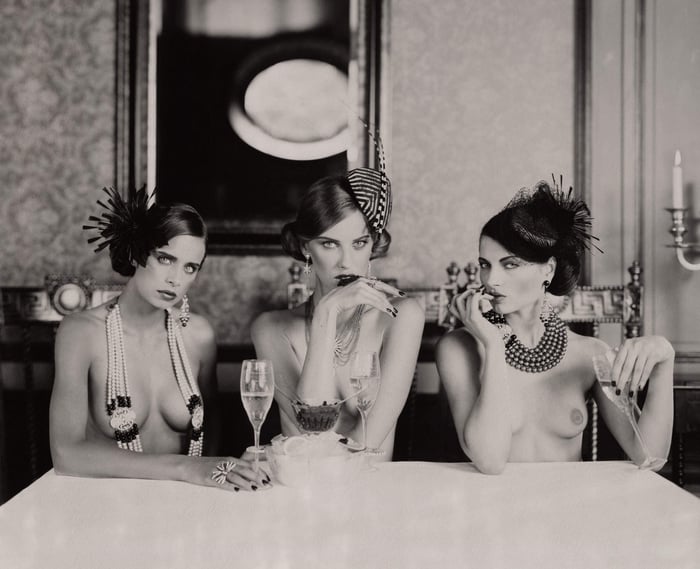Table of Contents
Marc Lagrange – Fine Art Photography with Lasting Elegance
Marc Lagrange Now Exclusively Represented in Switzerland by Petra Gut Contemporary
Who Was Marc Lagrange?
Marc Lagrange (1957–2015) was a Belgian fine art photographer whose work merged precision and passion in equal measure. Renowned for his ability to craft images that balance elegance and vulnerability, he created a visual language that transcended trends, fashion, and time. His photographs are often described as cinematic—rich in atmosphere, deeply human, and layered with emotional nuance.
Born in Kinshasa, then part of the Belgian Congo, Lagrange relocated to Belgium with his family at an early age. Initially pursuing an academic path in engineering, he developed a fascination with visual storytelling that would soon eclipse his technical studies. By the 1980s, he had committed himself fully to photography, transforming what began as a personal passion into a distinguished international career.
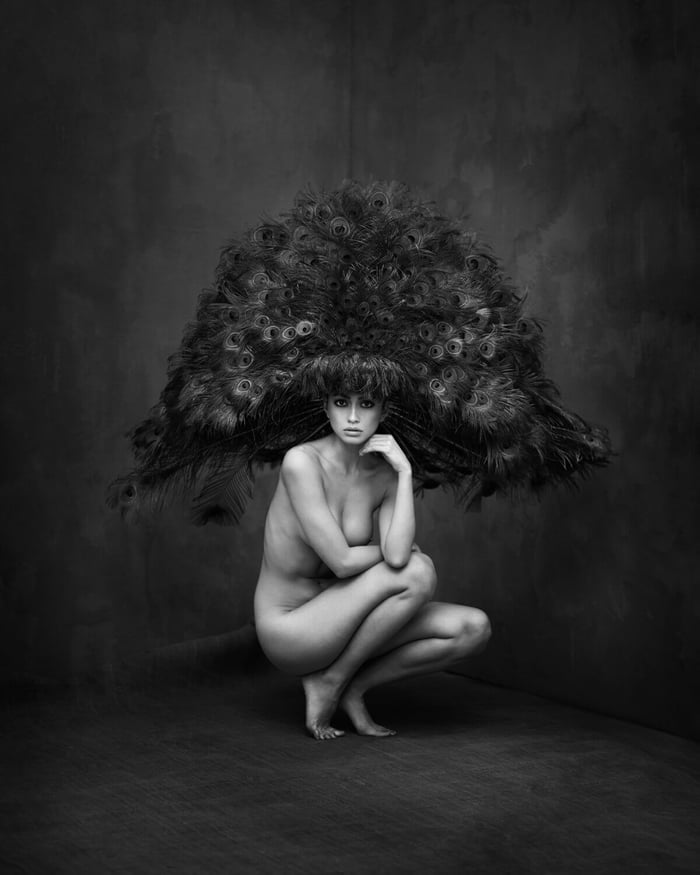 Marc Lagrange, 1000 Eyes (B&W), 2014, Archival Pigment Print, Limited Ed.
Marc Lagrange, 1000 Eyes (B&W), 2014, Archival Pigment Print, Limited Ed.Lagrange worked primarily in Antwerp, building a reputation for meticulous craftsmanship, emotional intimacy, and an unwavering dedication to analogue processes. He preferred large-format film cameras, particularly the 8 ×10 Polaroid, which allowed for tonal richness and detail impossible to replicate digitally. This choice reflected his belief that the slower, more deliberate pace of traditional photography encouraged genuine connection between photographer and subject.
His imagery often drew inspiration from classic cinema, old-world glamour, and the layered histories of European interiors. Hand-built sets, antique furniture, velvet drapery, and carefully modulated lighting formed the stage on which his muses could fully inhabit their roles—not as models, but as collaborators in the creative process.
For Lagrange, photography was as much about trust as it was about composition. His long-term relationships with muses such as Inge Van Bruystegem and Carole produced some of his most enduring works, images that reveal strength, sensuality, and self-possession in equal measure.
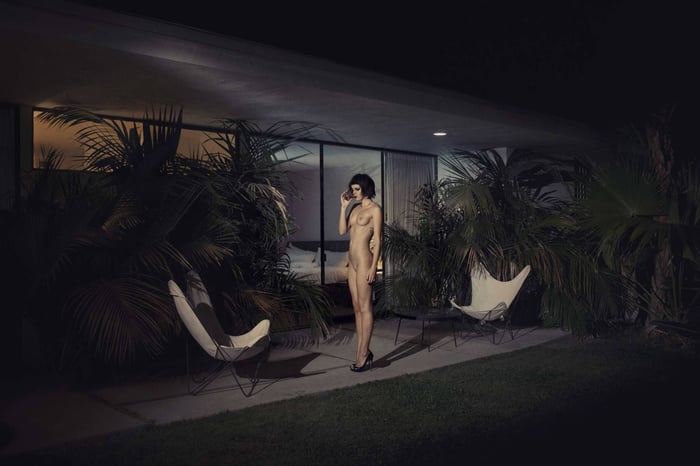 Marc Lagrange, Chateau Marmont Room Service , 2012, Archival Pigment Print, Limited Ed.
Marc Lagrange, Chateau Marmont Room Service , 2012, Archival Pigment Print, Limited Ed.Why Did He Choose Analogue Photography?
Despite the industry shift to digital, the artist remained committed to analogue formats, particularly large-format cameras and the 8×10 Polaroid. These tools provided unmatched tonal richness and a physicality that digital images could not replicate.
Key elements of his process:
Large-format film cameras for depth and fine detail.
Hand-built sets with antique furnishings, velvet drapes, and chandeliers.
Minimal retouching to maintain authenticity.
His deliberate, disciplined approach turned each shoot into an immersive event rather than a rapid series of frames.
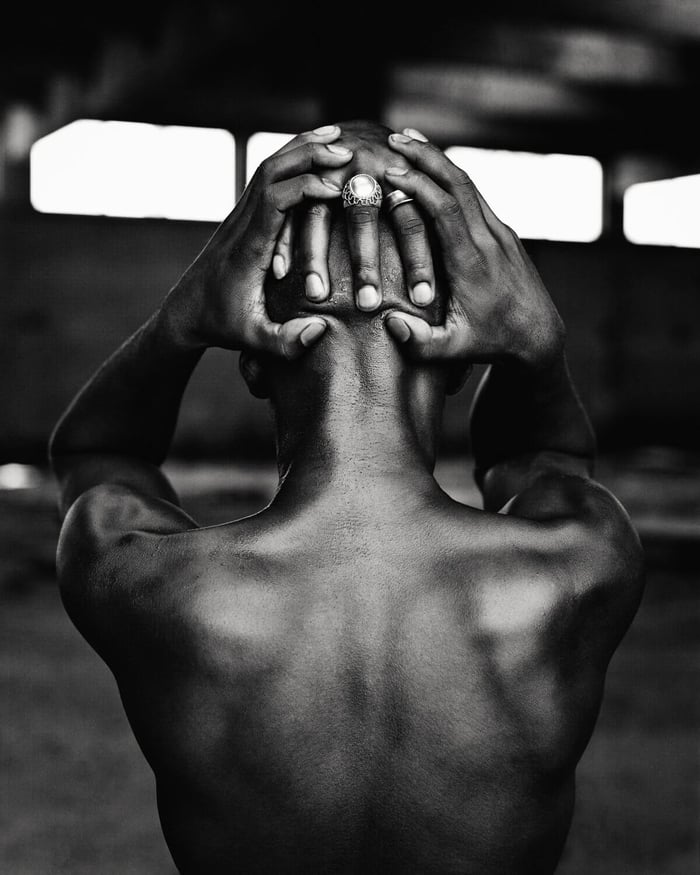 Marc Lagrange, Three Hands, 2000, Archival Pigment Print, Limited Ed.
Marc Lagrange, Three Hands, 2000, Archival Pigment Print, Limited Ed.The Role of Muses in His Art
The Belgian photographer collaborated closely with his models, developing long-term relationships built on trust. These muses were not passive subjects but active participants in the creative process.
Notable figures included dancer Inge Van Bruystegem, whose strength and grace inspired dynamic portraits, and Carole, whose nuanced expressions added emotional depth.
Why muse relationships mattered:
Trust and mutual respect fostered genuine expressions.
Nudity was portrayed as elegant and sovereign.
Posed perfection was replaced by authentic moments.
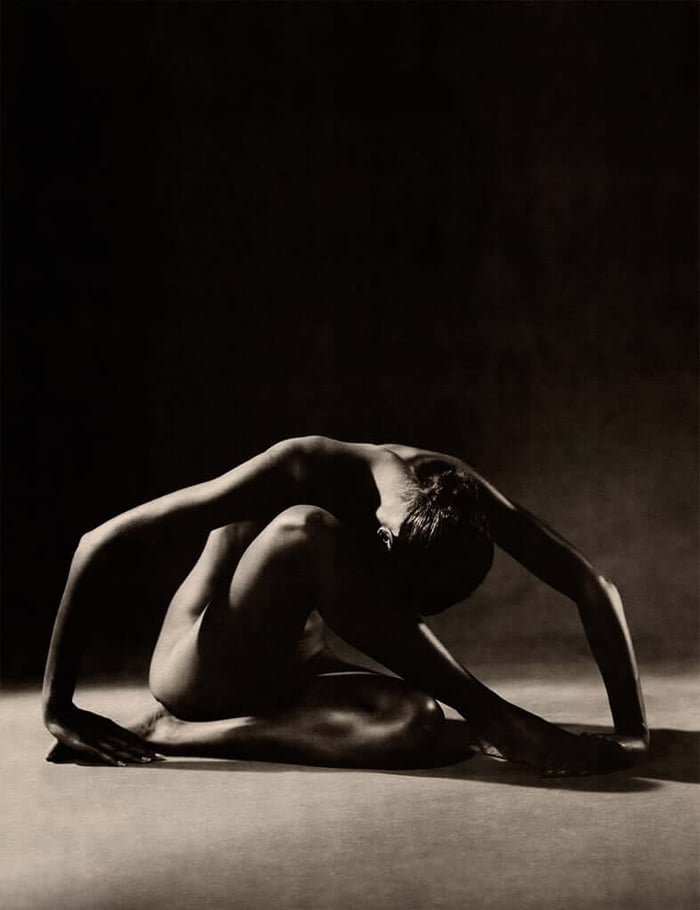 Marc Lagrange, A Tale of Shadow, 2000, Archival Pigment Print, Limited Ed.
Marc Lagrange, A Tale of Shadow, 2000, Archival Pigment Print, Limited Ed.
Signature Style and Settings
His work often feels like scenes from a film. Locations included the Château Marmont in Los Angeles, discreet Antwerp lofts, and historic European salons.
Objects such as champagne coupes, pearls, or lace gloves were used as narrative devices rather than mere decoration, adding symbolism and texture to the stories his images told.
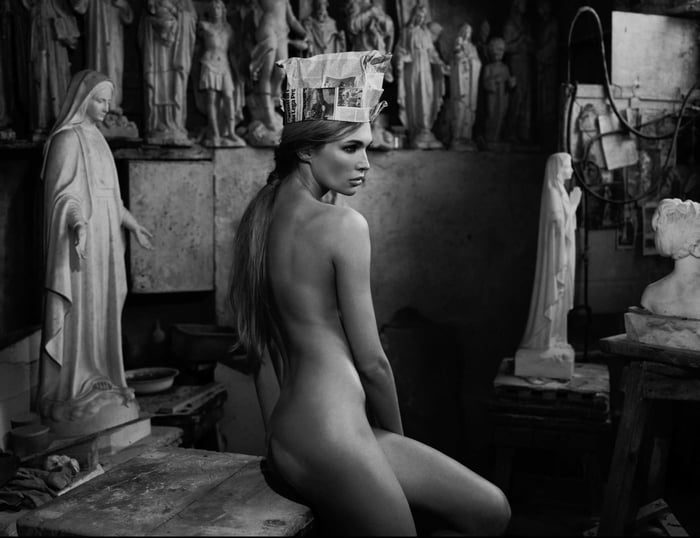 Marc Lagrange, Angels and Saints, 2015, Silver Gelatine Print, Limited Ed.
Marc Lagrange, Angels and Saints, 2015, Silver Gelatine Print, Limited Ed.Publications and Monographs
| Title | Year | Focus |
|---|---|---|
| Polarized | 2009 | Black-and-white works with theatrical staging. |
| Diamonds & Pearls | 2013 | Colour images rich in texture and opulence. |
| Room 58 | 2014 | Narrative variations in a single location. |
| Senza Parole | 2015 | Minimalist, sculptural, and meditative works. |
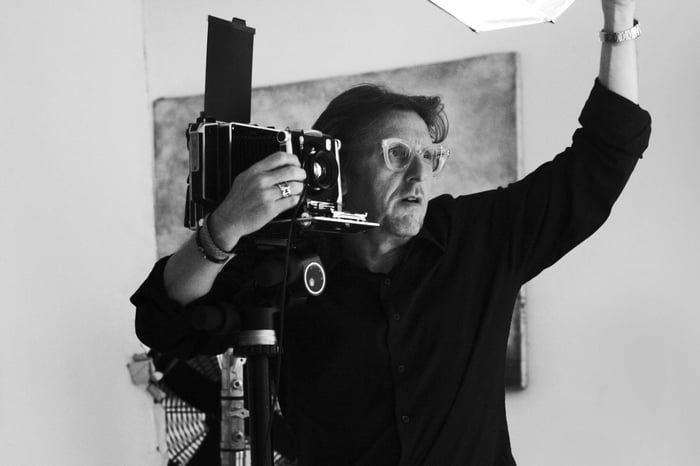 Marc Lagrange, Selfportrait
Marc Lagrange, SelfportraitExhibitions and Recognition
His work has been presented in museums and fairs worldwide, including:
Extra Large, Kunsthaus Graz – Exhibition at Kunsthaus Graz highlighting large-format works.
Timeless Beauty, Gallo-Romeins Museum in Tongeren – A thematic show exploring beauty through the ages.
He also participated in leading international art fairs such as:
TEFAF Maastricht – One of the world’s premier art and antiques fairs.
Art Paris – A major European fair for modern and contemporary art.
Art Miami – A leading U.S. contemporary art fair during Miami Art Week.
In addition, he collaborated with Delvaux, the Belgian luxury leather goods house, creating a unique fusion of fine art photography and high-end design.
The Senza Parole Series
This final series, created in Pietrasanta, Antwerp’s Handelsbeurs, and a Paris apartment, distilled decades of work into pure form. Minimalist settings, marble textures, and deep shadows replaced elaborate sets. Premiered at TEFAF 2015, it was celebrated for its quiet strength and refined vision.
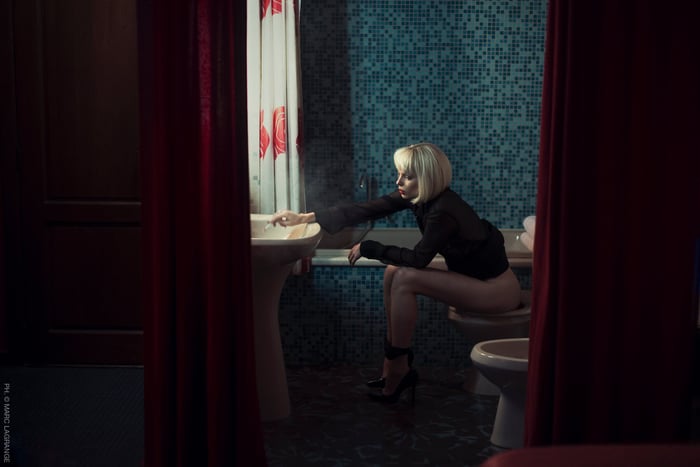 Marc Lagrange, Fleur de Pavé (Colour), 2014, Archival Pigment Print, Limited Ed.
Marc Lagrange, Fleur de Pavé (Colour), 2014, Archival Pigment Print, Limited Ed.
Legacy and Representation
Since his passing in 2015, the Atelier Marc Lagrange in Antwerp has safeguarded his archive, preserving the authenticity and craftsmanship that defined his work. Among the most celebrated posthumous projects is The Chocolate Collection, created with the now-discontinued Polaroid Chocolate film. This rare material produces images with a warm sepia tone and rich depth, qualities Lagrange used to enhance the tactile sensuality of his portraits. Each photograph in the collection carries a distinctive texture and tonal warmth, embodying the artist’s mastery of analogue processes.
In Switzerland, Petra Gut Contemporary is the exclusive representative of his estate, presenting his photographs through curated exhibitions.
Enduring Relevance
In an era defined by speed and digital abundance, his art reminds us of the value of patience, craft, and human connection. Each image invites reflection, offering beauty that is as deliberate as it is lasting.
FAQs
Who was Marc Lagrange?
He was a Belgian fine art photographer (1957–2015) known for blending emotional depth with technical mastery, often working in large-format analogue film.
What is Marc Lagrange famous for?
His cinematic, sensual portraits that balance elegance with authenticity, often featuring elaborate sets and long-term muses.
Why did he work with analogue photography?
He preferred the tonal richness, depth, and intentional pace of large-format film, especially the 8×10 Polaroid.
Where can I see Marc Lagrange’s work in Switzerland?
Petra Gut Contemporary exclusively represents his estate in Switzerland, showcasing his photographs in curated exhibitions and art fairs.
What was Senza Parole?
His final series, debuted at TEFAF 2015, which featured minimalist, sculptural compositions and marked a shift toward visual purity.



